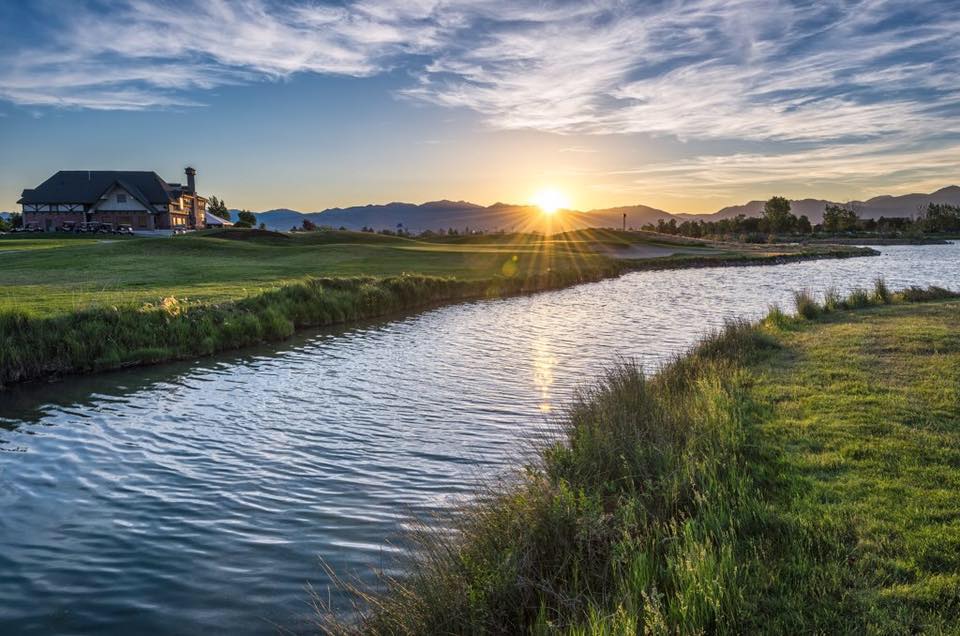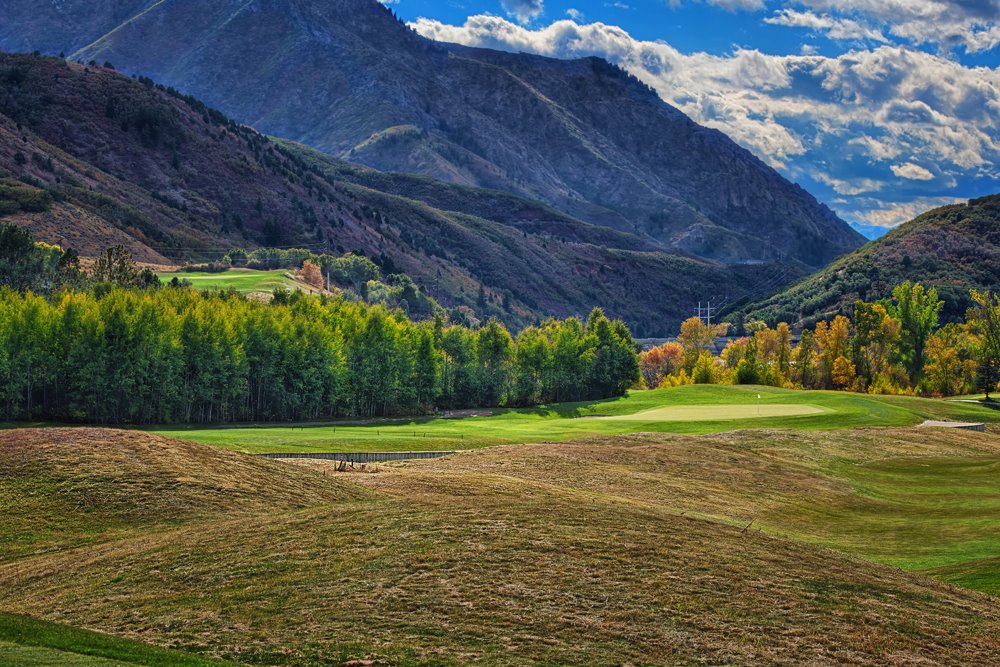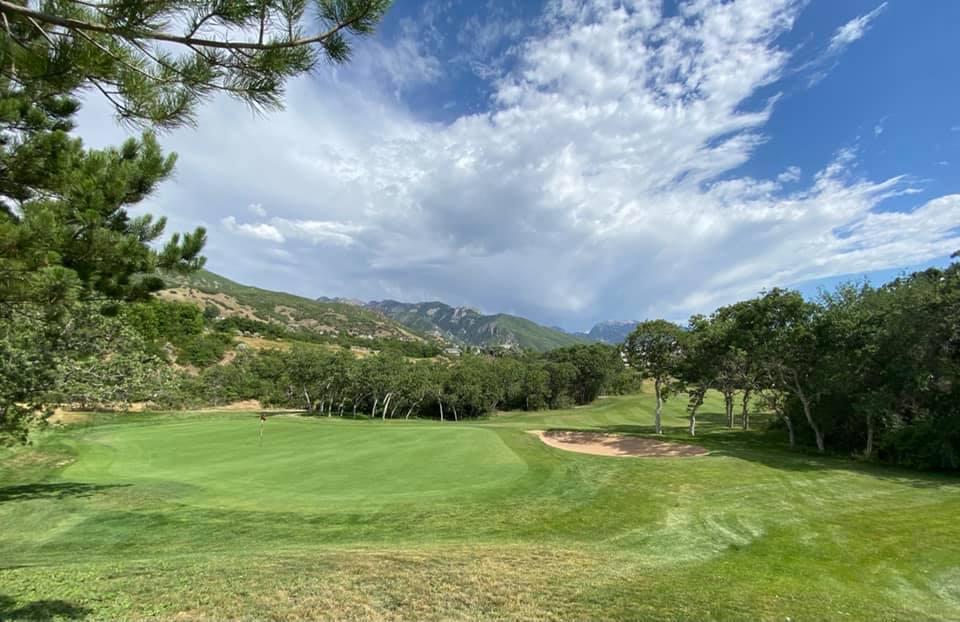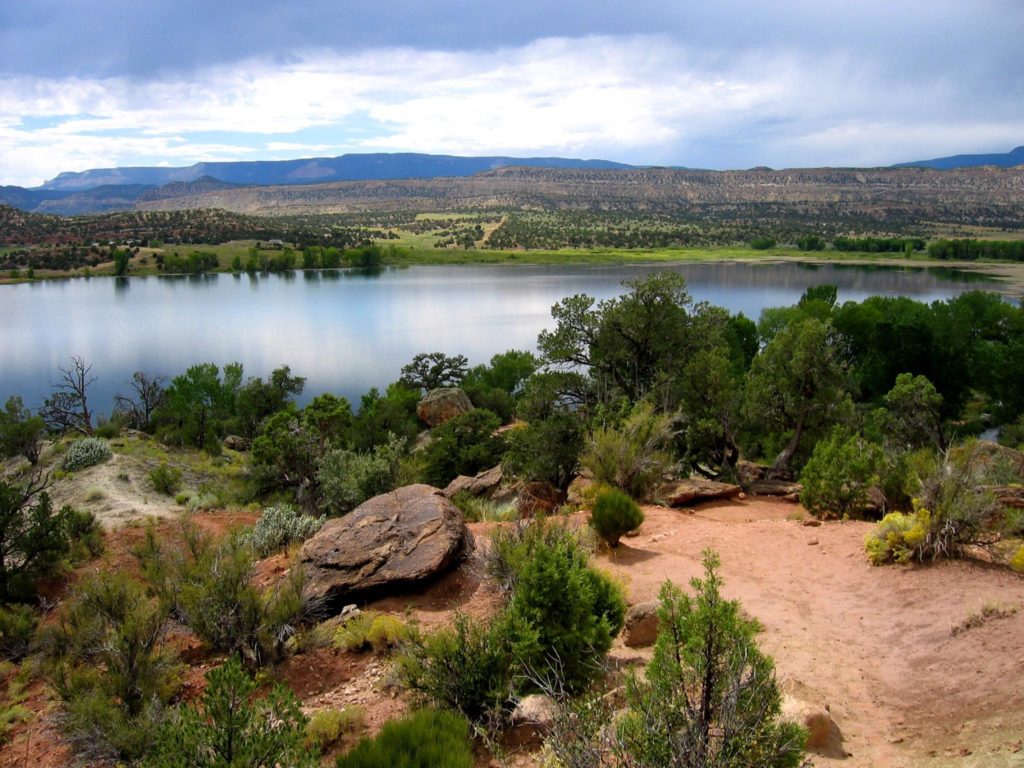
Salt Lake City is one of the nation’s cleanest, friendliest and most picturesque cities, and the city and the Wasatch Front are renown as a haven for winter sports, so much so that the area was the host of the 2002 Winter Olympics.
But Salt Lake (as those in the know call the city) is also a haven for wonderful golf, and with its 4,200 feet of elevation — even more in the surrounding areas — is one of the West’s true places to play the grand game at lofty levels.
There’s not much publicity about golf in the region, as the powers that be prefer to let the courses do their own talking. The northern suburb of Farmington is the host of Utah Championship on the Korn Ferry Tour (at Oakridge Country Club), and the U.S. Amateur Public Links was held in 2012 at Soldier Hollow Golf Course in Midway, about 50 miles south of SLC.
We’ve taken a handful of golf trips to the area, and are happy to report that there’s great golf – at affordable rates — aplenty along the Wasatch Front. In this feature, we will talk about three public tracks within 20 miles of the City Center, another a little further away, and two wonderful courses in the area’s biggest state park.


Stonebridge Golf Club showcases Miller’s prowess as a designer
Our first stop on this trip was a round at Stonebridge Golf Club in West Valley, a 27-hole Johnny Miller design that plays through both a residential area and a business park on the flight path to the burgeoning Salt Lake City International Airport.
The three nines here are called Creekside, Sunrise, and Sagebrush, and on our visit we teed it up on the 18 holes made up of Creekside and Sunrise, which play to a par pf 72, at almost 7,100 yards from the back set of four teeing grounds. Located along the Wasatch Front, the golf courses all have scenic views and plenty of water. The club is named Stonebridge after the red rock bridges that are scattered throughout the courses.
The Creekside course has a Scottish links-style layout that features bunkered greens and fairways with wide, open landing areas. It begins with a bang with the 449-yard par-4 first that’s one of the toughest opening holes I’ve played, and crescendos at the 445-yard par 4 sixth. Creekside ends with back-to-back par-5s of 498 and 531 yards that should be birdie holes but require precise approaches to devilish putting surfaces.
The Sunrise course is a little more of a parkland layout and, like the other two nines here, is relatively flat. Don’t take lightly the 134-yard, par-3 third, which demands a tee shot underneath the hole to have any chance at birdie but give it all you got on the drivable 350-yard par-4 fourth. This nine also closes with a par-5, but it’s a legitimate three-shotter of 580 yards, with the approach over water to a smallish green.
Large bunkers, plenty of water, and undulating putting surfaces are the track’s defense, with mostly wide driving corridors and smooth rolling putts once you have the flatstick in your hands.

Two for one at Mountain Dell Canyon Course
The Canyon course at Mountain Dell is one of two 18-hole tracks at this bustling, municipal facility situated 16 miles east of downtown Salt Lake City and at an altitude of 6,000 feet above sea level.
The Canyon offers breathtaking views and frequent glimpses of wildlife and its higher elevation provides ideal alpine golfing conditions as it stretches up the mountain from the clubhouse approximately four miles before looping back.
The course features 13 of the facility’s original 18 holes as designed by the legendary William Bell in 1962 with five newer — and quite frankly — better holes fashioned by the Neffs, William H. and his son William Howard, that roll up the eastern canyon, carved out of the natural oak brush and rose thickets. It’s carded as a par 72 at 6,787 yards from the back tees.
There is plenty to like about the Canyons course, which, because of its dual personality, is really two courses in one — both a parkland layout and an alpine test. I loved the go-for-it-from-the-tee 322-yard, par-4 third, and the back-to-back par-5s that followed, one, the 517-yard fourth, that you can reach in two, and the other, the 595-yard sixth, on which you have to play for three shots to the green.
Canyon’s best hole is likely the 444-yard, par-4 15th, which requires a tee shot out of a chute onto a wide fairway and a solid middle iron to medium-sized, back-to-front sloping putting surface.
Many of the Canyon course’s holes can be visually intimidating for the average golfer and the majority usually punish inaccurate tee shots, especially on the newer offerings. Combined with the Lakes course on the West side of the property, it’s one of the best municipal facilities you can play anywhere.

Old Mill GC has its quirks
You’ll have fun as well on the Gene Bates-designed Old Mill Golf Course, owned and operated by Salt Lake County and set just off I-215 a short drive from all major areas of the valley as well as the airport.
Old Mill GC, routed in an old gravel pit on the mountain slope between Wasatch Boulevard and the freeway, plays to a par of 71 and at just 6,769 yards from the back set of five tee boxes.
The majority of the course is laid out on rolling mounds and hills without trees, and the fairways are wide and mostly forgiving, allowing the occasional errant shot and a realistic chance to score from an adjoining fairway.
Those fairways have been sculpted for hole definition and to provide landing area options, making the correct club decision paramount. From the tee it becomes important to pick a target and then choose the right club. The greens were designed to provide a wide variety of easy to more difficult hole positions.
Old Mill has a dramatic change of scenery on its last four holes. In complete contrast to the open and treeless terrain of the first 14 holes the track finishes by cutting its way through a thickly wooded corner of the property, with narrow fairways and criss-crossing streams.
The most demanding of this final threesome of holes is the 343-yard 16th, a dogleg-right par-4 that requires a bit of “local knowledge” to survive. A layup with an iron into the dogleg’s corner is the safe shot as anything further is blind and must clear some tall trees. You’ll be tempted to go for the green in one mighty blow (you likely can even get there with a 3-wood) but it’s best to play with prudence.
Overall the quirkiness of the final three holes has led to talk about flipping the nines here, a move that would place those holes in the middle of the round rather than at the finish.
Hobble Creek is worth the trip south
About a 45-minute drive south in Springville, the city-owned Hobble Creek Golf Course may be even better, and more luscious, than the two courses at Mountain Dell.
Built in 1967 by Bell in the relative flatlands of Hobble Creek Canyon, this course (which was redesigned and expanded to 18 holes by Neff the elder in the mid-1990s) offers some of the best scenery in Utah.
The course features tree-lined fairways, with its namesake creek snaking throughout it. The mountains seem to be right on top of the golfer and provide a great backdrop, especially with shots into the greens.
Hobble Creek isn’t necessarily long, topping out at 6,406 yards from the tips and at a par of 71; its defense is its fast, sloped greens that require accuracy on approaches. Trouble abounds above the hole.
The front nine is easier than the back as the home half’s fairways are very narrow and crossed by streams. The secret to the course is not length – just keep the ball in play. And though located in the mountains there are not many extreme elevation changes.

Wasatch Mountain State Park’s courses offer two different challenges
Two more Neff courses are highlighted in Wasatch Mountain State Park, a 22,000-acre preserve in the Heber Valley of Wasatch County near Midway, about a 30-minute drive southeast of Salt Lake City.
Established in 1961, the park provides year-round recreation, including camping, picnicking, hiking, mountain biking, off-highway vehicles, horseback riding and — for our purposes — two outstanding golf courses that have withstood the test of time.
The well-regarded Mountain and Lake courses are consistently ranked among the most popular and scenic in Utah. Nationally, Golf Digest rated the courses 4.5 out of five stars in their “Best Places to Play” review.
The Lake was designed by Neff the elder in 1972. Occupying gentle terrain, the par-72 layout, which plays 6,910 yards, is often considered the easier of the two. As its name implies, the course has eight different lakes impeding play, along with generally narrow fairways and mid-sized greens.
It has several shorter par-5s (the 517-yard first, 489-yard ninth and 516-yard 17th), that require accurate drives to avoid well-placed stands of mature trees along the fairways. Its pastoral beauty offers just the right setting for about every level of player.
Conversely, its counterpart (opened in 1990) is a classic mountain-style layout, carved from natural, rocky contours. The front nine was designed by both Neffs, while the back side is credited to Neff the younger.
The outward nine holes travel two miles up the mountain while the inward set returns to the clubhouse. Along the way players experience dramatic rises and falls and expansive vistas of the Heber Valley, often catching glimpses of deer, elk, wild turkeys, moose and other wildlife.
The 6,459-yard Mountain course is a rollercoaster ride with up- and downhill holes involving tee shots that seemingly hang in the thin mountain air forever. It’s a nice collection of holes, letting players hit all the clubs in their bag.
There are few forced carries at Mountain, which is a good test for better golfers thanks to its off-kilter downhill, uphill and sidehill lies.
The Salt Lake City area is one of the most underrated places to play golf in America. This review barely scratches the surface of the offerings in the region — if you are looking for a place to golf that’s affordable and quick to get to and has more great golf than you can swing a stick at, this is it.

